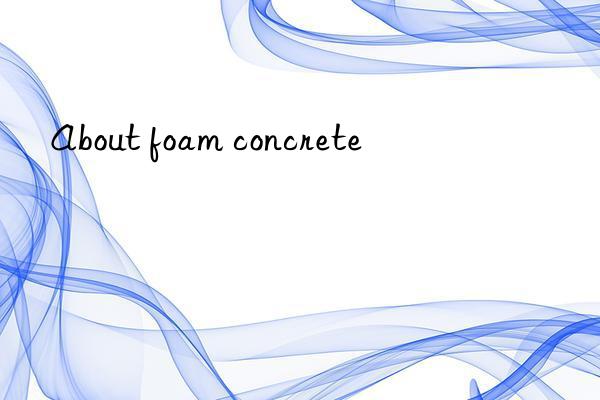
Concrete is a new energy-saving building material that is waste-free, environmentally friendly, energy-saving, low-cost and non-combustible. As a new type of energy-saving and environmentally friendly building material, scholars at home and abroad have done a lot of research and development on it, making it widely used in wall materials. Today let’s take a look at how foam concrete is used in projects.
Performance advantages
(1) The advantage of cast-in-place construction;
(2) The advantage of low water absorption;
(3) Low Advantages of ultra-light density;
(4) Advantages of flexible process and wide variety;
(5) Advantages of small investment and easy popularization.
Specific applications
1. Retaining walls
Mainly used as rock walls in ports. Foam concrete is used as lightweight backfill material behind the quay wall to reduce vertical loads and also reduces lateral loads on the quay wall. Foam concrete can also be used to improve the stability of embankment slopes by replacing part of the soil on the slope. Due to the reduced mass, the forces affecting the slope stability are reduced.
2. Sports fields and track and field tracks
The density of foam concrete is 800~00kg/m3; such sports fields can be used for hockey, football and tennis activities, or covered with foam concrete A 0.05m thick porous asphalt layer and plastic layer can be used as a track and field track.
3. Pipeline backfilling
Use foam concrete to backfill underground abandoned oil tanks, pipelines (containing crude oil and chemicals), sewage pipes and other cavities that can easily lead to fires or collapses. These troubles can be solved at a low cost. The density of foam concrete depends on the diameter of the pipe and the water level, generally 600~1100kg/m3;.
4. Lean concrete filling
Due to the use of flexible hoses, foam concrete has great workability and adaptability, so it is often used for lean concrete filling.
5. Roof Slope
Foam concrete is used for roof slopes. It has the advantages of light weight, fast construction speed and low price. The slope is generally 10mm/m, the thickness is 0.03~0.2m, and foam concrete with a density of 800~1200kg/m³ is used.
6. Landscaping
Make foam concrete with a bulk density of 600~1000kg/m³, which can be used for garden rockeries, trash cans, tables and stools, etc.
7. Roof insulation
The foam concrete roof insulation material product roof insulation board can also be directly poured on-site according to user requirements. Mechanized construction saves time and effort, and can also reduce costs. Engineering costs.
Methods to reduce shrinkage and cracking
Generally speaking, due to poor early maintenance, insufficient water retention measures or harsh conditions during use, foam concrete will cause the water inside it to evaporate, thus Resulting in volume shrinkage, cracking or significant water absorption. Technical measures to reduce the shrinkage of foam concrete and prevent cracking and water absorption mainly include the following aspects:
(1) Appropriate cement dosage;
(2) Adding appropriate amount of expansion cement;
(3) Low molding water-cement ratio;
(4) Optimize the maintenance system and strengthen early water retention;
(5) Use waterproofing agent, mixed with Or surface coating;
(6) Add wire mesh (anti-crack mesh) to the insulation layer to prevent foam concrete from cracking. </p



 微信扫一扫打赏
微信扫一扫打赏
